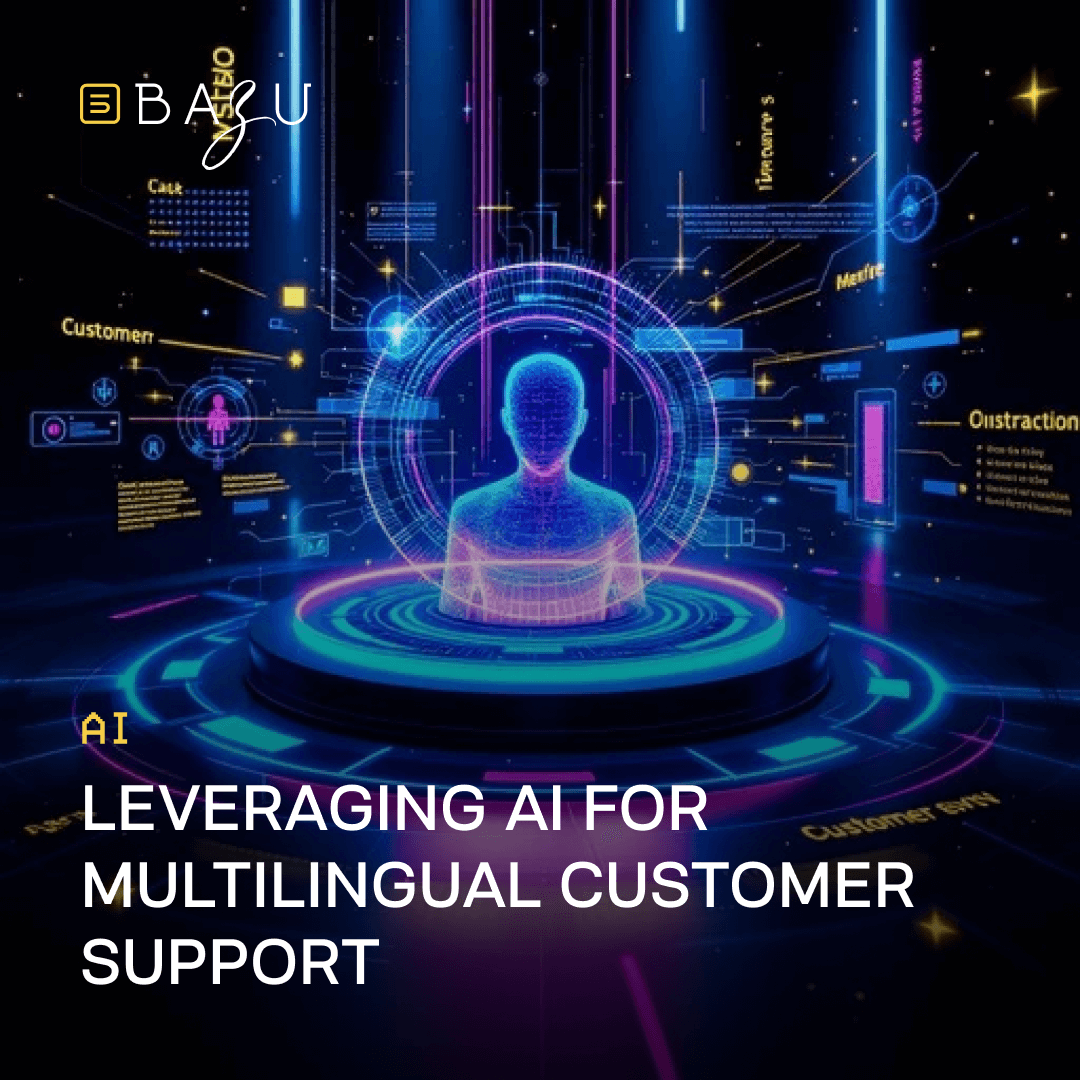Today’s B2B sales environment demands strategic clarity, precise targeting, and measurable ROI. Traditional marketing tactics – broad email blasts, generic ads, and cold outreach – just don’t cut it anymore. Enter account-based marketing (ABM), a focused approach that targets high-value accounts with personalized campaigns and messaging crafted just for them.
Now pair ABM with artificial intelligence (AI), and you’ve transformed your outreach into a high-performance engine. AI enables faster account identification, dynamic personalization, real-time orchestration, and continuous optimization:
The rise of AI-powered account-based marketing
ABM redefined B2B marketing by narrowing the funnel – focusing on named accounts rather than anonymous masses. Sales and marketing teams collaborate to create bespoke campaigns for high-tier targets. This method drove better alignment, engagement, and ROI.
What changed now? AI.
AI’s capacity to process massive datasets, recognize patterns, and adapt quickly has made ABM exponentially more powerful:
- Sales teams feel like they have precise heat maps pointing to the hottest accounts.
- Marketers can send custom messages that land at exactly the right moment.
- Executives enjoy visibility into pipeline velocity and account-level performance.
Why traditional ABM needs AI
Traditional ABM still excels at hyper-relevant targeting – but it has limitations:
- Time-consuming research: Manual profiling of accounts, personas, and intent is labor-intensive and hard to scale.
- Static targeting: Target account lists often go stale, ignoring shifts in market conditions or account activity.
- Limited personalization: Crafting unique messaging per account isn’t sustainable as the number of target accounts grows.
- Siloed insights: Marketing and sales may use different tools, resulting in fragmented data and poor visibility.
AI addresses these limitations head-on:
- Automated enrichment ensures account profiles update continuously.
- Predictive scoring highlights accounts with the highest conversion potential.
- Content personalization at scale enables dynamic messaging across email, landing pages, and ads.
- Multi-channel orchestration aligns timing across outreach methods.
- Continuous optimization provides real-time insights into what’s working and what’s not.
AI doesn’t just complement ABM – it enables you to run it more efficiently, effectively, and intelligently.
Best practices for implementing AI in ABM
Deploying AI effectively requires planning and deliberate strategy. Here are the proven best practices that separate successful AI-powered ABM from “AI for show.”
1. Start with clean, enriched data
Machine learning is powerful – but only as good as its inputs. Start by auditing your CRM and marketing stacks:
- Remove duplicates, outdated contacts, and inactive accounts.
- Add firmographic – industry, size, location – and technographic data (e.g., stack/integrations).
- Enrich each account to include buyer personas, engagement history, and fit scores.
AI-powered data providers can automatically pull this info, filling in demographic and behavioral gaps.
Case in point: A B2B SaaS company added technographic data to its account profiles, discovering that accounts using a complementary CRM were 3x more likely to convert. They adjusted targeting accordingly – and boosted deal velocity immediately.
Need help improving your account data quality? Reach out to BAZU to talk about data enrichment tools.
2. Use predictive scoring to prioritize engagement
Next, feed cleaned data into an AI scoring model. These models use scores like historical win/loss data, target fit, and engagement signals to rank accounts by propensity to buy.
Focus marketing and sales efforts on:
- High-priority accounts: High probability of conversion—allocate your top-tier outreach.
- Watchlist accounts: Moderate scores—use targeted nurturing campaigns.
- Low-engagement accounts: Automate low-touch yet consistent outreach.
Example: A B2B security vendor launched an AI-driven scoring model and found that their top 10% accounts outperformed the rest by 4x in both pipeline value and close rate. Their ROI? Nearly 300%.
Curious how predictive scoring can work in your pipeline? Schedule a demo with BAZU.
3. Personalize messaging and creative at scale
Personalization resonates – but it’s often overwhelming to deliver. AI solves this problem by dynamically tailoring elements like:
- Email subject lines & body based on industry triggers.
- Real-time chat widgets reflecting the visitor’s interest.
- Website or landing page messaging based on account-specific data or vertical.
Data-driven personalization improves engagement significantly. Users receive messaging aligned to their unique context: vertical, buyer role, intent signals, and campaign history.
Case study: A B2B vendor used AI to inject account names, pain points, and relevant stats directly into landing pages – improving landing page conversion rates by 55% in just six weeks.
4. Orchestrate multi-channel outreach
AI-powered ABM doesn’t rely on one channel. Instead, it syncs outreach across email, LinkedIn, account-specific ads, dynamic chat, and even offline events.
Your AI stack can detect when a target downloads a case study, and immediately:
- Trigger an email from an SDR.
- Drop a LinkedIn Sponsored Message.
- Display an account-specific retargeting ad.
- Offer a quick intro via chat or phone.
This orchestration ensures 360° messaging tailored to where they are in the journey.
Example: A logistics company used AI to coordinate: email > LinkedIn > chatbot > ad. Their engagement with top-priority accounts grew by 200% – and pipeline increased by 60%.
Want to see why multi-channel orchestration is key? Connect with BAZU for a playbook.
5. Measure impact and optimize in real time
With AI, ABM campaigns become living systems:
- Dashboards track account progression and engagement across channels.
- AI detects anomalies – like low-response rates – and triggers A/B tests automatically.
- Optimization engines shift budgets to top-performing strategies and creative.
- Model recalibrates as your pipeline evolves.
Smart insight: an industrial SaaS firm used AI-based analytics to reallocate ad spend away from underperforming verticals – saving 30% while boosting engagement by 45%.
Industry insights: AI ABM in action
AI-powered ABM plays differently by vertical. Here’s how top sectors apply it successfully:
Tech & saas
- Track product usage, trial activation, expansion signals.
- Serve personalized onboarding content via dynamic chat.
- Target lookalikes of high-value accounts.
Example: A SaaS provider used AI to analyze trial user behavior and identified accounts with high cross-sell potential. AI-driven outreach led to a 25% increase in average deal size.
Manufacturing & logistics
- Detect supply chain trends and purchasing behaviors.
- Tailor marketing around cyclical needs and equipment usage.
- Nurture account-based demand through integrated AI maps and dashboards.
Financial services
- AI digs into intent signals from industry forums, rating sites, CAMs.
- Personalized messaging navigates complex DMUs and compliance checkpoints.
Healthcare & life sciences
- AI monitors research publication mentions, clinical talk, patent filings.
- Outreach to practitioners is personalized and GDPR/ HIPAA-compliant.
- Pair AI with trusted influencers or KOLs within the account.
Retail & e-commerce (B2B)
- AI captures order history and complementary product interest.
- Account-based offers aligned with inventory procurement cycles.
Preparing your team and tech stack
Success with AI ABM isn’t about tools – it’s about execution.
Align sales, marketing, and operations
- Host joint workshops to define target accounts, engagement criteria, and success metrics.
- Establish shared KPIs (deal velocity, pipeline coverage, ROI).
- Train teams on response workflows and automation trust.
Choose the right AI tools
Pick AI platforms that integrate with your CRM/MA stack and offer:
- Intent scoring
- Predictive insights
- Message personalization
- Multi-channel orchestration
- Reporting + optimization
Look for modular platforms so you can pilot functions like lead scoring, then expand to full-scale ABM orchestration.
Measure business impact, not features
It’s never about how fancy the tool is – but whether it moves your numbers:
- Account win rates
- Average deal size
- Pipeline velocity
- Marketing ROI
- Account engagement lift
Track and share these metrics with leadership for transparency and alignment.
Common challenges (and how to solve them)
No transformation is perfect. These are the top hurdles – and how to overcome them:
Data quality
Challenge: Incomplete or stale data leads to poor targeting.
Solution: Use AI-powered data enrichment; set a quarterly data audit process.
Change management
Challenge: Sales and marketing teams may resist using new tools.
Solution: Create a success task force, run training sessions, celebrate early wins.
Tech overload
Challenge: Too many tools can create complexity.
Solution: Begin with one AI function (e.g., predictive scoring), expand gradually, integrate with existing systems.
Regulatory concerns
Challenge: Sensitive data handling in regulated industries.
Solution: Choose GDPR/HIPAA-compliant tools, anonymize intent data where possible, implement best practices in data governance.
How to get started with AI-powered ABM
- Define pilot scope
Select a small set of key accounts (10–25) and define success metrics. - Clean and enrich data
Identify missing firmographic/intent signals and enrich them. - Deploy predictive model
Test scoring models to prioritize accounts. - Create personalized campaigns
Build tailored messaging across email, ads, and chat. - Launch, measure, optimize
Use AI dashboards to monitor pipeline; iterate creative, sequences, targeting.
Why partner with bazu for your AI ABM journey
At BAZU, we combine deep expertise in AI, marketing automation, and B2B sales to implement ABM at scale:
- Strategy: we’ll help define the right accounts, channels, and engagement cadence.
- Tech: we evaluate and integrate AI tools that fit your stack and goals.
- Operations: we train your teams to leverage AI, report performance, and optimize.
- Impact: we align success metrics (pipeline, deal size, velocity, ROI).
Ready to transform your B2B sales system with AI? Request a demo with BAZU today and start accelerating deals.
Summary: the future is AI-powered ABM
- ABM is proven. AI makes it scalable, predictive, and intelligent.
- Across industries – from SaaS to healthcare – AI-powered ABM delivers faster sales cycles, higher deal values, and better pipeline hygiene.
- The key is to start small, align teams, and iterate based on measurable impact.
- With BAZU’s help, you’ll gain a competitive edge with a tailored AI+ABM engine that grows with you.
The era of broad marketing is over. For B2B businesses, targeted, intelligent, and AI-powered outreach is the only way forward.
Let BAZU be your AI ABM partner. Contact us now to accelerate your success.
- Artificial Intelligence


